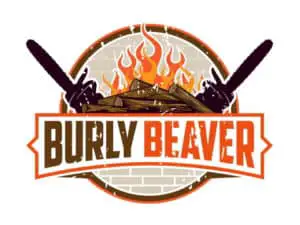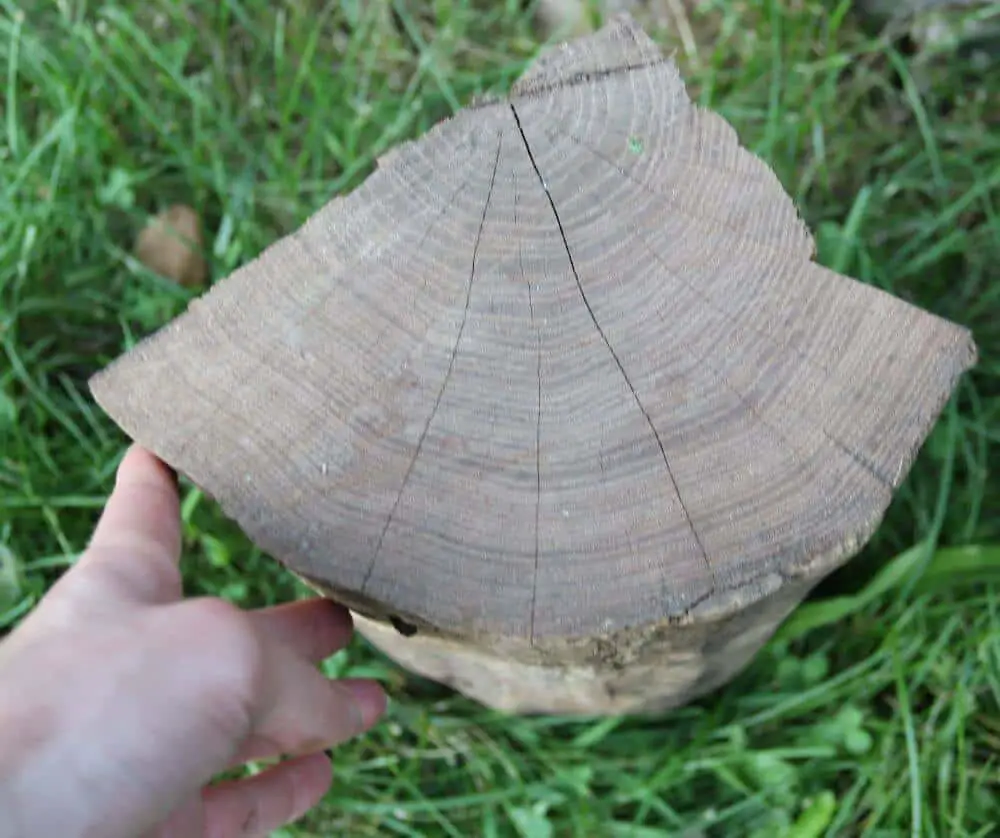
There are a ton of different types of firewood, and in this post, we’re digging into the details on Black Locust. The info below draws on data from university extension offices and my own experience with Black Locust.
Let’s start with the big question: Is Black Locust good for firewood?
Black Locust is arguably THE best type of firewood you can burn for heating. It has an exceptional heat output of 29.3 million BTUs per cord of seasoned wood. In addition, Black Locust produces minimal smoke and high-quality coals capable of burning through the night.
Not convinced? Check-out this video from my YouTube channel to see why Black Locust is a favorite among people who use wood heat for their homes.
Black Locust vs. Other Wood
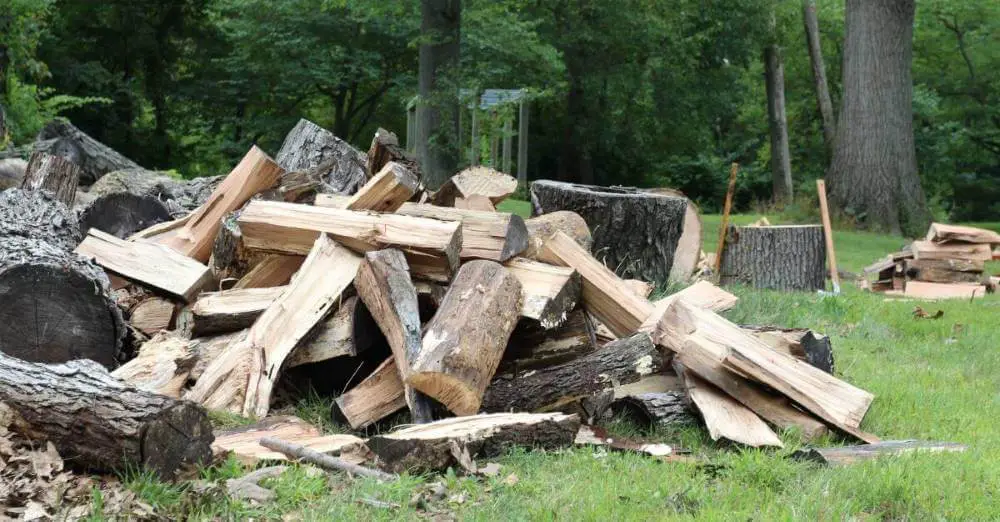
To help you get an idea for how Black Locust compares to other types of firewood, we’ve put together a graphic below, which provides a snapshot of some of the most common types of firewood in our area (in the Midwest USA), and they are divided into 3 levels of quality.
The top tier (top of the pyramid) is the absolute best firewood you can burn, whereas the bottom of the pyramid is the firewood that will still produce heat, but is not ideal because of low heat output, excessive smoke, difficulty splitting, or some other reason.
This ranking is not an arbitrary list, and it’s actually based primarily on data from several university extension offices.
If you’re not familiar with those, extension offices are typically associated with a university, and their role is to do research and provide services which help citizens better manage their land and natural resources. This includes guidance on the qualities of trees and firewood.
To learn more about the data sources, you can read the note below the image. Now, here it is!
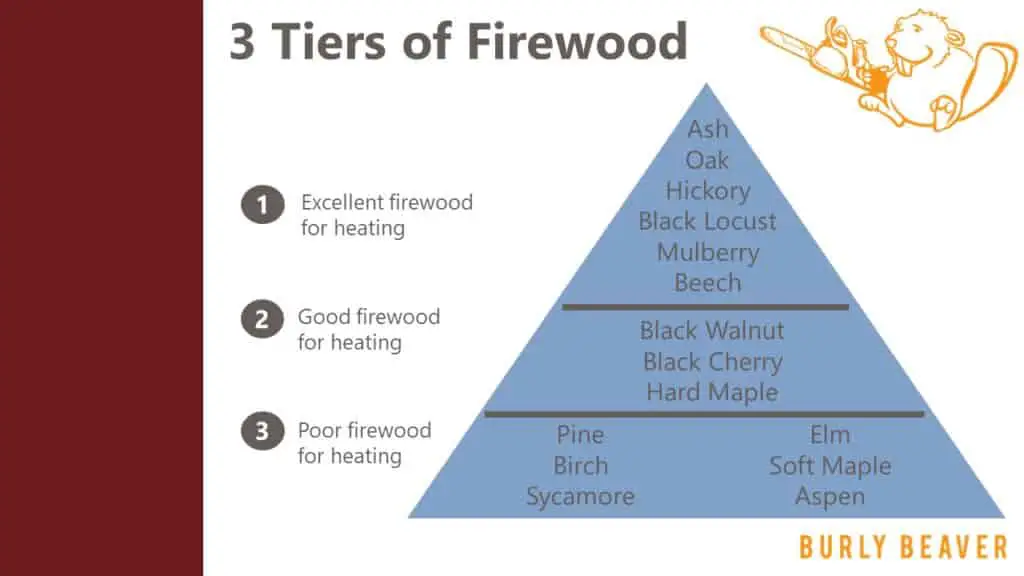
The information in this image is based largely off of data from the following sources: Utah State University Forestry Extension, Oklahoma Cooperative Extension Service, University of Illinois Extension, University of Missouri Extension, South Dakota State University Extension. In addition, where there was missing data (only a few occasions), I’ve used my own experience to round out the data.
In the following section, we’re going to see how Black Locust measures up against the 6 most important burn qualities for firewood. Let’s get to it!
The 6 Burn Qualities of Black Locust
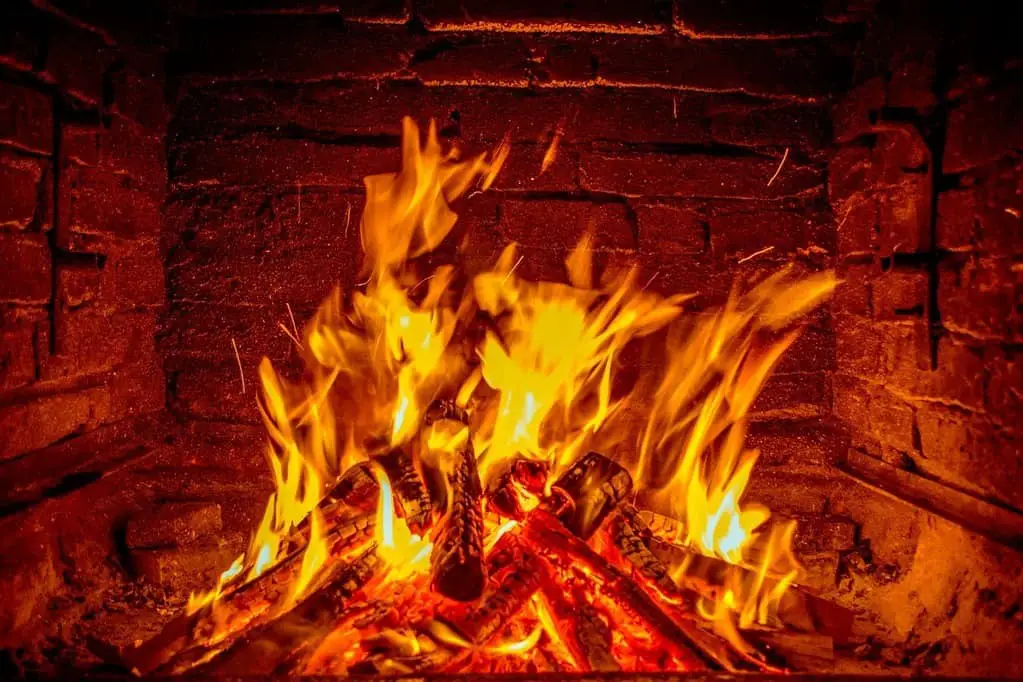
1. Heat Output vs Other Wood
Black Locust has the highest heat output of any wood that my family burns over winter. The only type of firewood that I know of that beats Black Locust on heat output, is Osage-Orange, but it’s not as common in our area.
The other common types of firewood that are close (bot not quite as hot) as Black Locust, include Hickory, Beech, and Oak, which are all also considered top-grade firewoods.
Below, you’ll find a chart that summarizes the BTU output and weight of 15 common firewood species’ (Note: data sources are mentioned beneath the infographic above).
This will help you get a side-by-side view to compare on heat and weight.
Heat Output of Common Firewood
| Species | BTUs | Weight/Cord (lbs) |
| Black Locust | 29.3 | 4192 |
| Hickory | 28.5 | 4072 |
| Beech | 27.5 | 3760 |
| Oak (White) | 26.4 | 3776 |
| Mulberry | 25.8 | 3712 |
| Ash | 24.2 | 3472 |
| Maple (Hard) | 23.9 | 3408 |
| Black Walnut | 22.2 | 3192 |
| Pine (Southern Yellow) | 22 | 2936 |
| Birch | 20.8 | 2992 |
| Sycamore | 24.1 | 2872 |
| Black Cherry | 20.4 | 2928 |
| Elm | 20 | 2872 |
| Maple (Soft) | 19 | 2752 |
| Aspen | 18.2 | 2160 |
As you can see, Black Locust claims the top spot on this list, which is ranked by highest heat output.
This is an important characteristic for firewood, but it’s not the only thing that you need to consider. There are some other things that might be deal-breakers for you, such as smoke output, sparking, and more.
In the next couple of sections, we’ll touch on more of the specific qualities of Black Locust and continue comparing it to other types of firewood.
2. Amount of Smoke
Black Locust produces very little smoke, especially when compared to Pine or Hard Maple, which are known to be big smoke producers.
Low smoke production is a common trait among our top tier firewoods, like Ash, Hickory, and Oak. However, Mulberry, which is an otherwise top-level firewood, does produce a moderate amount of smoke.
It’s also worth mentioning, that almost any wood will be VERY smokey if you burn it wet.
In addition to risks of creosote build-up (see #6 below), high smoke production is one of the reasons you should always make sure your firewood is properly dried before you burn it.
If you skip down to this section, you can learn more about seasoning firewood, and how you can accelerate the process.
3. Does it Spark?
Some types of firewood pop or spark quite powerfully. Catalpa wood can even blow the front panel off of a wood stove it’s so explosive!
Most types of firewood are not that dramatic, but many of them still spark significantly. This can be an issue if you’re using an open-air fireplace, or if you’re burning outside and there are fire risks (like very dry conditions).
You obviously don’t want to start a forest fire (or a house fire). As a result, it’s important to monitor any type of open-air fire, and also to know the qualities of the firewood you are burning.
In general, higher-quality firewood will throw fewer sparks, but this is one area where Black Locust isn’t the top performer. Black Locust throws a medium amount of sparks.
It’s not as bad as Mulberry, but other top tier firewood like Oak, Beech, and Ash, outperform Black Locust in this category. Hickory and Black Locust are about equal on the amount of sparks they release.
4.Smell or Fragrance
The fragrance of firewood is an important consideration, especially for outdoor fires. And some types of firewood, like Hickory and Cherry, are known to have exceptionally nice fragrances.
But for Black Locust, the smell is more or less irrelevant. It smells fine, it definitely doesn’t smell bad like Buckeye does, but the aroma of Black Locust is just very mild.
My personal favorite firewood aroma is Eastern Red Cedar, because of it’s fresh, rich, and almost-tangy smell. We put an old Cedar stump on the fire the other day, and it was simply spectacular.
Going back to Black Locust, the smell is fine, but nothing to get excited about. If you find all this talk of firewood aromas interesting, you should check out our article on the 11 best smelling types of firewood.
5. Does it Produce Coals?
Another factor that is commonly used for rating firewood is “coaling”. When any kind of firewood burns it produces coals, and the quality of the coals produced have a big impact on how long (and how well) the fire will continue burning.
For example, wood that has great coaling properties will work well as an overnight fuel in wood stoves, because the quality coals will help the fire stay hot through the night.
These long-lasting coals will also allow you to easily re-start a fire in the morning by simply adding more wood to the existing embers.
Black Locust has phenomenal coaling properties and large Black Locust logs are arguably the best “overnighter” fuel for wood stoves.
As a heavy hardwood, Black Locust is simply denser, and the coals will significantly outlast lighter woods like Pine, Birch, or Aspen.
6. Creosote Build-Up
If you’re using a fireplace or wood stove in your home, another important thing to consider is the maintenance of your chimney, and specifically preventing creosote build-up.
If you’ve not heard of creosote before, it’s a side product of burning wood, and it’s basically a black tar that is gradually deposited by wood smoke on the inside walls of a chimney.
Creosote isn’t a problem in small quantities, but if it gets built up, it can be quite dangerous. Build-up of creosote can reduce the ventilation of your chimney, and it’s also HIGHLY flammable, which can cause chimney fires.
To prevent creosote build-up, it’s important to properly maintain your stove and to have your chimney cleaned regularly.
In addition, you should only ever burn wood that is thoroughly seasoned (dried), because wet wood produces more creosote. Another big factor is the type of wood you’re burning.
In general, firewood that is very sappy will produce much more creosote build-up than firewood that is not as sappy.
Most hardwood firewood, including Black Locust, have low sap levels and produce less creosote than very sappy firewood like Pine.
Speaking of Pine, it’s probably the worst type of wood when it comes to creosote build-up. So much so that many people, including my family, completely avoid burning Pine in wood stoves.
Burn Quality Overall Comparison
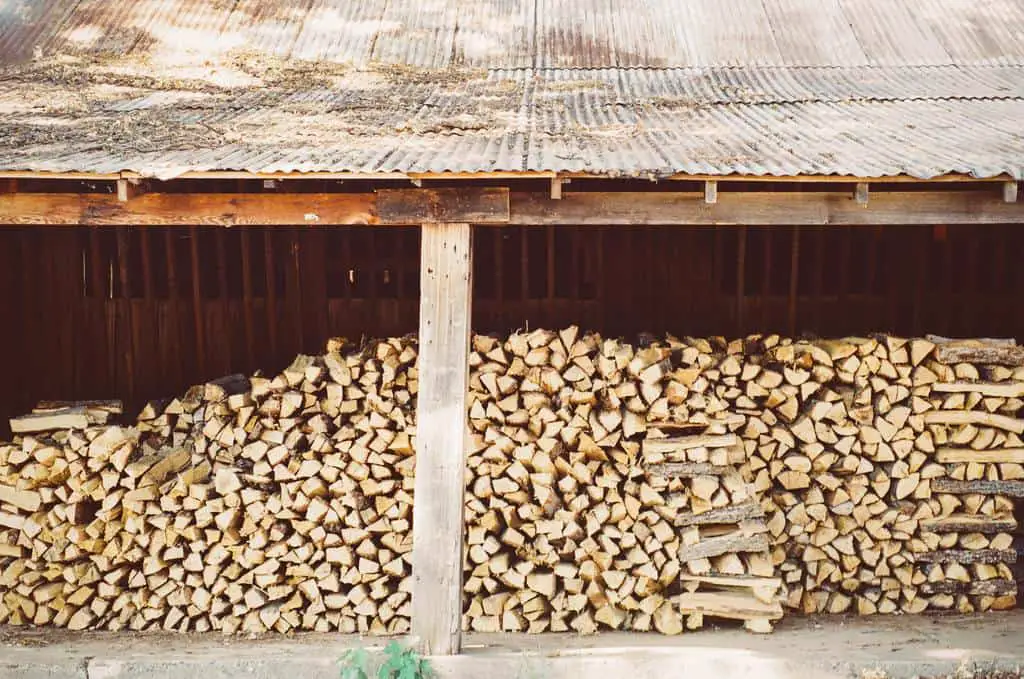
Alright, now that we’ve covered the 6 most important burning qualities for Black Locust, let’s draw a few quick comparisons between Black Locust and other top tier firewood types like Ash, Oak, and Hickory.
First, I think it’s helpful to mention that you probably aren’t going to have every kind of wood close by, and a perfectly reasonable way to choose from a list of top firewood types is to go with what is most readily available.
However, if you do have a lot of firewood options, here’s some more info to help you break the tie.
- Black Locust has the highest heat output of any common firewood in our area, and if you can get it where you are, it’ll burn hot!
- Black Locust produces extremely good coals that are arguably the best of any firewood, for keeping a fire burning hot all night.
- Black Locust is more difficult to split compared with some of the other top-level firewoods like Oak and Ash.
Hopefully that will help you see a few subtle distinctions between Black Locust, and other top-grade firewood.
Next, let’s touch briefly on identifying Black Locust firewood, so you can be sure you know what type of wood you’re dealing with.
3 Easy Ways to Identify Black Locust
Black Locust can be somewhat difficult to identify when the wood is dried, or if you don’t have any leaves to go by.
We’ll touch on some of the characteristics that you can use to spot Black Locust in a pile of dried wood later, but first, let’s touch-on the easiest ways to identify Black Locust.
1. By the Thorns
Black Locust is one of only a few species of trees in our area (Midwest USA) that grow thorns directly from the tree. In Black Locust, these thorns often grow near the point from which it’s leaves sprout. See the image below:

So, if you’re looking at a live tree, or one that’s been recently cut down, you can check the tree for thorns. If you find thorns, that dramatically narrows your options, and there’s a solid chance that you’re looking at Black Locust.
2. By the leaf
The next thing you can look at for live trees, or for logs where they’re still attached, is the leaves.
Leaves are among the most common methods for identifying any type of tree. And for a Black Locust, you would look for a leaf that is alternate-compound.
For a leaf to be alternate, means that they grow down the branch in a left-right-left style pattern.
For a leaf to be compound, simply means that each leaf is actually a chain of leaflets, all growing from a single bud off of the tree branch.
There are many types of trees that are alternate-compound, but one of the other things that distinguish Black Locust leaves are the number of leaflets, which can be very high with anywhere from 9-19 per compound leaf.
This might already be enough for you to make a call on whether the type of leaf you have is Black Locust or not. However, if you need more information, you can also consider the size and rounded shape of the leaflets.
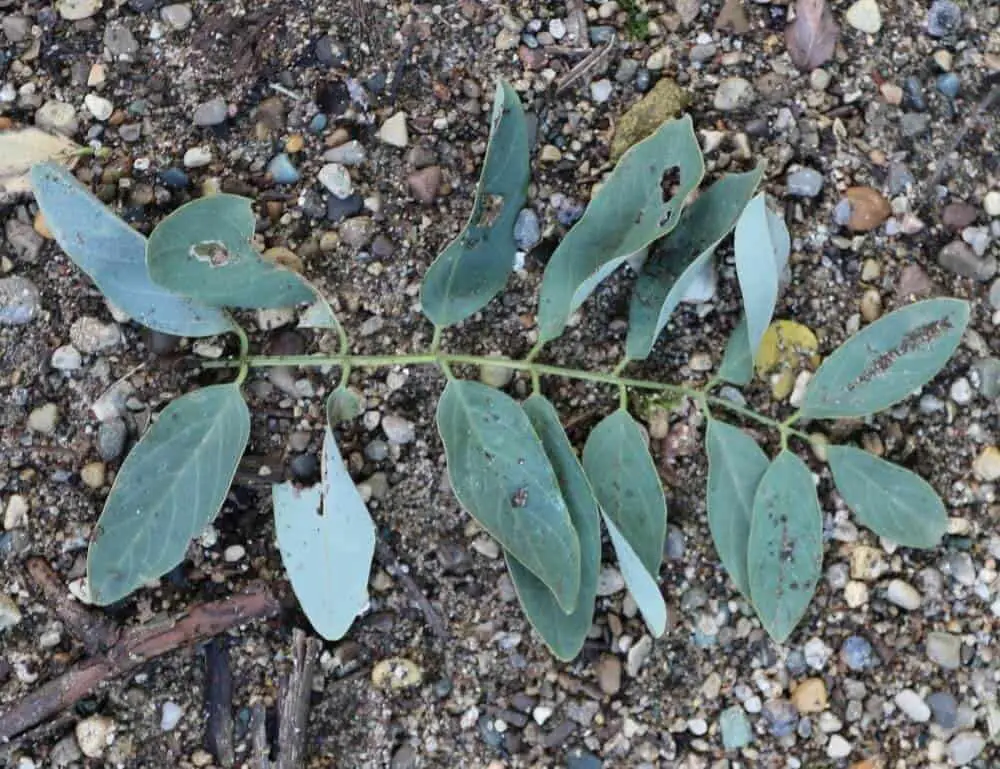
3. The Color
When it is freshly cut, Black Locust has a very distinctive bright yellowish-brown color to it. You won’t see this as clearly with dried wood, but for a fresh log, it will look quite yellow.
For Dried Black Locust
Alright, those are the 3 easiest ways to identify Black Locust. Now, if you only have a dried piece of firewood and nothing else to go by, then there’s a couple of other things you can consider.

First, you can see from the log above, that the sides are a bit “wavy”. Black Locust is known to get minor fluting on the sides, so if you see some small “warps” or “ridges” going up the wood, it might be Black Locust.
Another thing to consider is density. Black Locust is one of the heaviest types of firewood around. If you find a log that’s heavier than other wood of the same volume (e.g. Hickory, Oak), that’s another sign it might be Black Locust.
Alright, now that we’ve covered identification, let’s take a quick look at seasoning for Black Locust.
Seasoning Black Locust
For wood to be “seasoned” basically just means that it’s thoroughly dried. Different types of firewood will require more (or less) time in order to dry-out, and you should always plan to burn firewood that is completely seasoned.
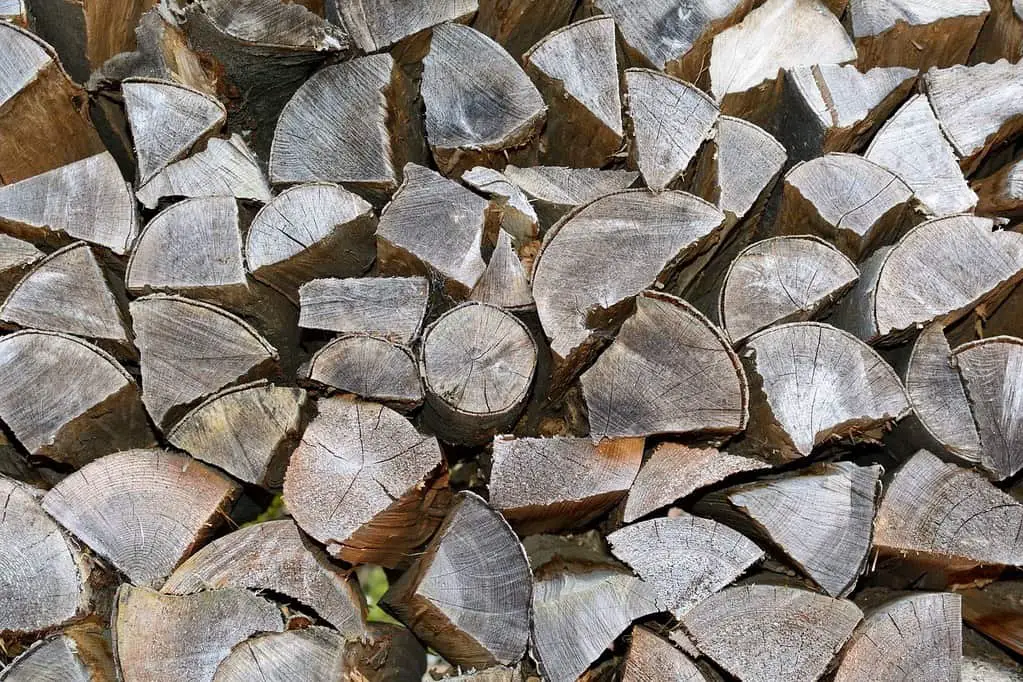
In general, firewood will take at least 6-8 months to fully dry, and for denser hardwoods this process can take even longer. You should expect it to take 1 year or more to season Black Locust firewood.
Exactly how long it will take depends on several factors, including the climate where you’re located (e.g. wood dries faster in Texas than in Oregon), and if you’ve properly split and stacked the wood.
In order to expedite the process, and to get your firewood seasoned as quickly as possible, use the following tips for fast drying:
5 Tips for Seasoning Firewood Fast:
1. Split the firewood
firewood dries WAY faster when it is split into pieces, rather than sitting in log-form. Think about it, when the wood is split more surface area is exposed to the wind and sunshine, which are the primary contributors to dry wood.
2. Elevate the firewood
You may do a double take here, because a lot of people don’t do this step due to the extra effort required. And I’ll admit, this isn’t absolutely essential, but if you put your stack of firewood up on some pallets or perpendicular planks, it will increase airflow beneath the firewood stack and will accelerate your drying time.
3. Stack the firewood
To optimize your drying time, you should stack your firewood neatly in a location that will maximize the amount of sunshine and air flow. For example, stack the wood away from buildings (out of the shade), and point the face of the stack (not the ends) towards the direction from which you get the most breeze.
4. Leave space between rows
if you make multiple stacks of firewood, each stack should be separated by at least a few inches for air flow. This will allow both stacks of wood to dry better.
5. Cover (optional)
If your wood pile is outside you can put a cover or tarp over the stack to drain any rain/snow. Just make sure that it doesn’t totally block airflow from the side of the stack, otherwise it will trap in moisture and make seasoning take longer.
if you want to learn more about seasoning firewood, you should take a look at this article.
Related Questions
What is the Best Firewood?
The best type of firewood for heating a home with a wood stove, is Black Locust or Hickory, due to the high heat output and long-lasting coals. For outdoor campfires, Pine or Cedar are better because they produce a beautiful fire with a pleasant aroma, and doesn’t burn too long.
Black Locust vs Honey Locust
The clearest difference between Black Locust and Honey Locust is the difference in their thorns. Honey Locust has large branching thorns, whereas Black Locust has individual spines, typically at the base of leaves. Black Locust is also denser and produces more heat when used as firewood.
